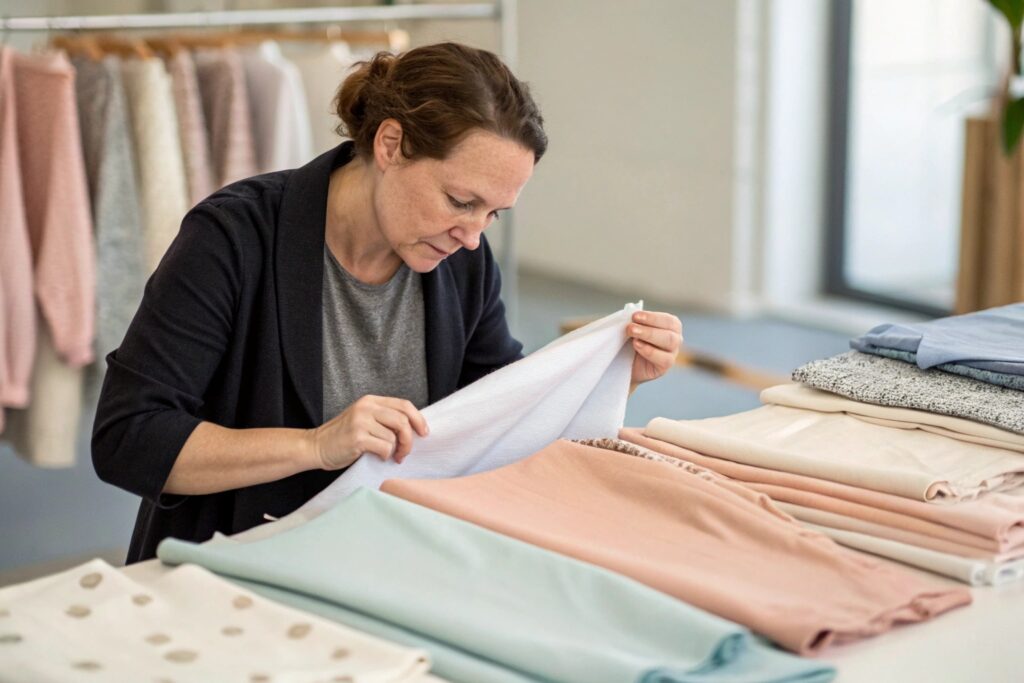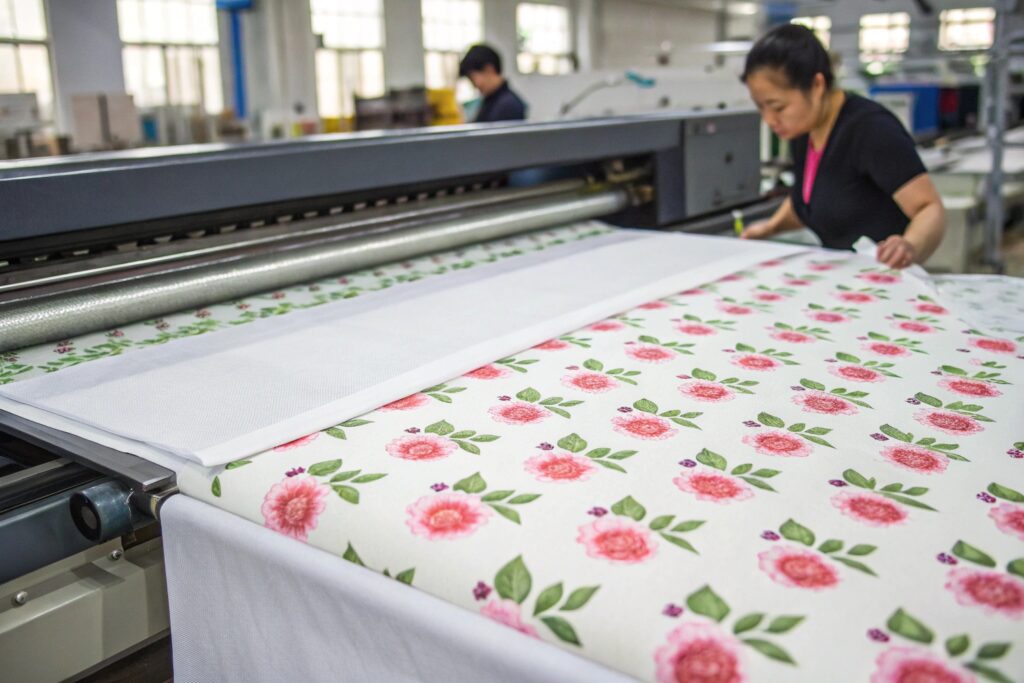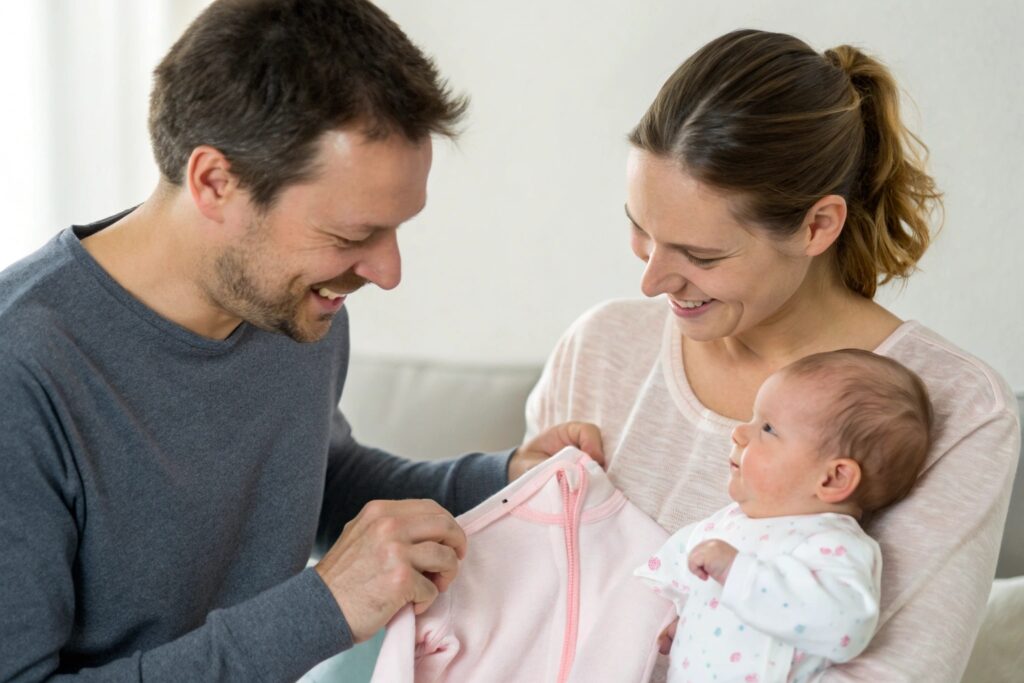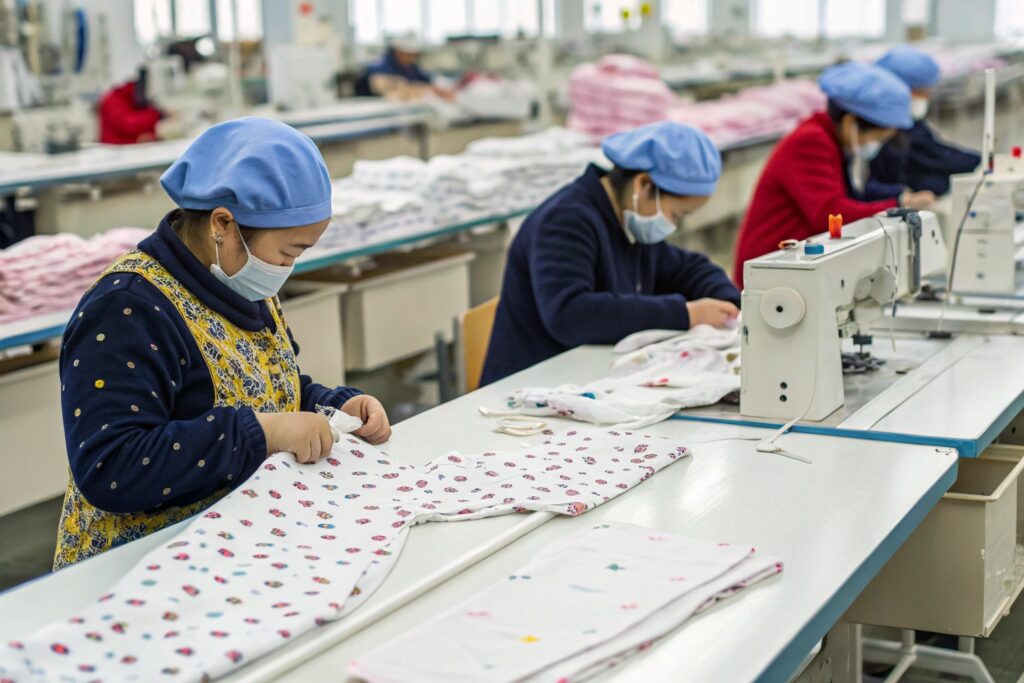Babywear buyers want unique products. But how do you personalize baby clothing when you’re producing at scale?
You can deliver personalized babywear by using flexible manufacturing, smart technology, and thoughtful design that meets individual tastes—even in bulk production.
Mass production doesn’t mean one-size-fits-all anymore. Let me show you how we at Fumao Clothing help brands stand out in a sea of sameness.
How to Add Custom Touches in Bulk Babywear Orders?
It’s easy to customize a single baby onesie. But how do you do that for 5,000 units? Many buyers think large orders can’t be personal.
You can add personal touches in bulk orders through design tweaks, unique packaging, branded labels, and fabric choices tailored to your audience.

What types of customizations are most popular among babywear brands sourcing from overseas manufacturers?
The most popular options we see include:
- Custom prints with names, animals, or seasonal icons
- Woven labels with the brand’s story
- Size tags in the client’s language
- Logo embroidery on chest or sleeve
- Special packaging for retail shelves
At Fumao, a European buyer once asked us to include a message card in each babywear set: “Made with love, packed with care.” We printed thousands, bundled them in custom kraft paper, and helped them launch a viral moment on Instagram.
How do suppliers like Fumao make personalization possible without slowing down production?
We’ve designed a modular system in our factory:
- Digital print files allow fast design swaps
- Separate stations for embroidery, labeling, and packing
- Inventory zones for client-specific materials
Our staff can apply different labels and packaging to different batches, even in the same style run. We manage all this under one roof—no need to outsource or delay.
We also help clients make design decisions that fit bulk needs. For example, if a brand wants four name variations, we recommend printing them all on one pattern sheet and cutting smart. That saves time and cost while keeping each product unique.
What Technologies Enable Mass Personalization in Apparel?
Traditional garment production favors repetition. But now, technology allows variety without losing efficiency.
Technologies like digital printing, automation, and smart inventory systems enable scalable personalization in babywear production.

What printing or embroidery methods make personalized babywear both fast and cost-effective?
Let’s break it down:
| Technology | Best Use | Speed | Cost |
|---|---|---|---|
| Digital printing | Names, patterns, small runs | Fast | Medium |
| Sublimation print | Polyester babywear | Very Fast | Low |
| Heat transfer vinyl | Personalized one-offs | Medium | High |
| Embroidery machine | Logos, small design areas | Fast | Low-Medium |
Digital printing changed everything. We can take one design file and apply it to thousands of units—with each name or element swapped automatically.
For embroidery, we use machines that store up to 50 design templates. If a client orders multiple designs per batch, our operator can switch programs in seconds.
How can small-to-mid-size brands use these technologies without building their own factories?
Even if you don’t own a facility, you can benefit by working with manufacturers that have invested in these tools.
At Fumao, we give our clients access to:
- Custom design previews
- Sample embroidery before bulk run
- On-demand printing for repeat orders
- Barcode-ready packaging
All they need to do is send us the artwork or a sketch. We’ll handle the rest. One of our U.S. clients scaled their brand from Etsy to national retail shelves by using our digital print line and low-MOQ flexibility.
Why Personalization Builds Trust with Modern Parents?
Today’s parents care about more than price. They want to feel a connection—with your brand and with what their baby wears.
Personalization shows that you care about the details, which helps parents trust your brand and return for future purchases.

What emotional value do personalized baby clothes bring to young families?
When a parent sees their child’s name or birth month on a romper, it’s no longer just clothing. It becomes a keepsake.
This emotional link builds loyalty. A simple custom touch—like a soft neck label that reads “Hi, I’m new here”—makes parents smile. These smiles lead to shares, reviews, and repeat orders.
We once helped a brand include birth-year prints (“Born in 2024”) across their newborn line. Sales increased by 30%, and customers kept the clothes as memory pieces.
How does brand transparency and tailored messaging boost confidence in overseas-sourced babywear?
Buyers like Ron know that modern parents question everything—fabrics, origin, safety. So personalized messaging builds transparency:
- “Made in a certified OEKO-TEX® factory”
- “No harsh dyes or formaldehyde used”
- “Custom made for your little one”
We help brands print these messages directly on the packaging or inside labels. It’s a simple step, but it signals quality and care. Buyers report fewer returns and more customer reviews when they use this approach.
How to Balance Customization with Scalable Production?
Buyers worry that too much customization will delay orders or raise costs. But the right process makes it scalable.
To balance customization with scale, you must standardize parts of the process while offering flexibility in design, labeling, or packaging.

How can I offer multiple personalized options without affecting lead time or unit cost?
It’s all about planning. Here’s what we do at Fumao:
| Custom Element | Scalable Method |
|---|---|
| Labels | Print in bulk, sort by SKU |
| Fabric designs | Pre-approve templates with client |
| Packaging | Use modular inserts and bags |
| Styles | Base on one pattern with variations |
We also assign each order a batch code, so our workers follow exact steps—even with differences between SKUs. This keeps things fast.
Some clients want 4 size labels, 3 logo tags, and 2 packaging versions in one order. Instead of doing these separately, we plan workflows that sort items automatically by section in the final packing zone.
What workflow or production structure helps manage high-volume yet personalized babywear manufacturing?
Here’s how we structure our factory:
- Design phase – We receive all artwork, verify formats, and test samples.
- Pre-production – Labels, packaging, and fabric prints are produced and stocked.
- Assembly line – Workers sew base garments in mass.
- Customization line – Add logos, tags, and special prints.
- Packing zone – Batch sort, inspect, and seal with the right materials.
This keeps the speed of traditional production but adds flexibility at the finishing stages. And with our 5 production lines, we can process multiple client batches at once.
Conclusion
Personalized babywear doesn’t have to slow you down. With the right tools, planning, and partner, you can scale uniqueness and win the trust of modern parents.










